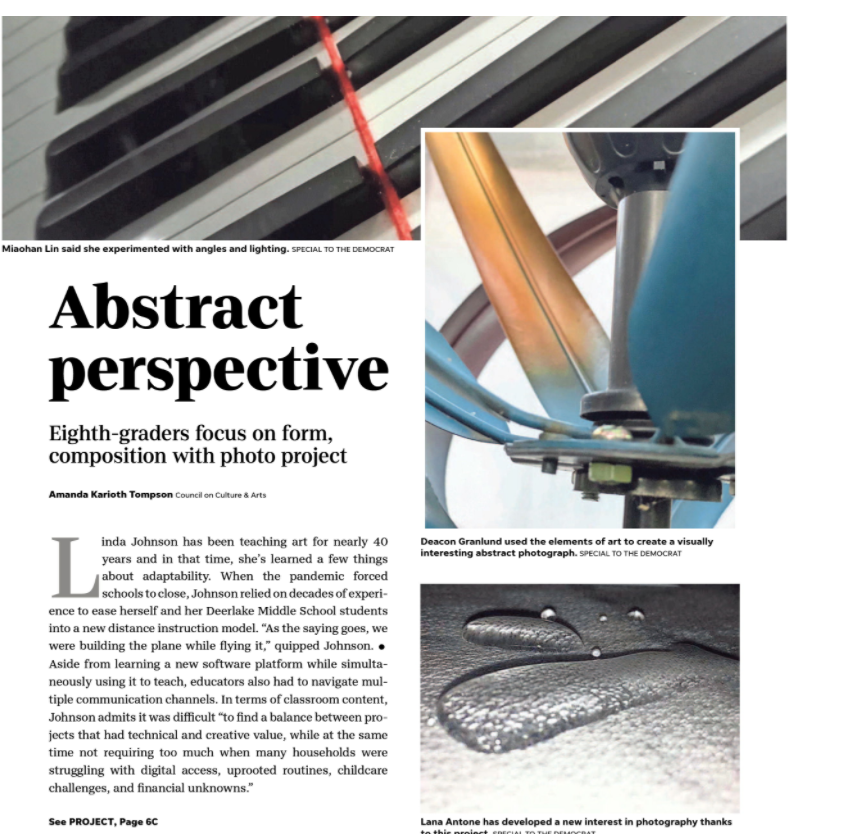
Linda Johnson has been teaching art for nearly 40 years and in that time, she’s learned a few things about adaptability. When the pandemic forced schools to close, Johnson relied on decades of experience to ease herself and her Deerlake Middle School students into a new distance instruction model. “As the saying goes, we were building the plane while flying it,” quipped Johnson.
Aside from learning a new software platform while simultaneously using it to teach, educators also had to navigate multiple communication channels. In terms of classroom content, Johnson admits it was difficult “to find a balance between projects that had technical and creative value, while at the same time not requiring too much when many households were struggling with digital access, uprooted routines, childcare challenges, and financial unknowns.”
Understanding that students and families would be stressed and may not have access to many art supplies, she planned lessons that were simple and required little in the way of materials.
Johnson wanted to offer a more rigorous project to eighth graders enrolled in her high school credit art class. She decided an abstract photography activity would allow them to tackle a difficult concept in a way that wasn’t too intimidating. All they needed was a digital camera, a light source, a large piece of white fabric or paper draped over a chair, an assortment of household items, and a basic understanding of abstract art.
“Some people may think abstract art is ‘about nothing’. This is not true,” Johnson explained. “Abstract art is about form, shape, color, line, texture, pattern, space, composition, and process, the steps taken and decisions made while creating a work.” These formal qualities are the building blocks for creating art and describing it, and abstract art is an investigation of these qualities.
“Abstract art gives the viewer freedom to explore the artwork and assign their own meaning. This intensely personal process enriches a viewer's experience. It is less about ‘what was the artist trying to say with this artwork?’ and more about ‘what does this artwork make me feel or think when I look at it?’”
Though some students initially struggled to grasp the concept, once they started to create, it became more clear. Some took to the project right away as Lana Antone’s mother Christi Anderson can confirm. Anderson said “I printed the directions, handed them to her, gave her my phone and went to my office to work. When I went into the living room later, she had it set up like a studio. She has now expressed a lot of interest in photography.”
Read the rest of the story by visiting the Tallahassee Democrat
or read more by downloading the article here